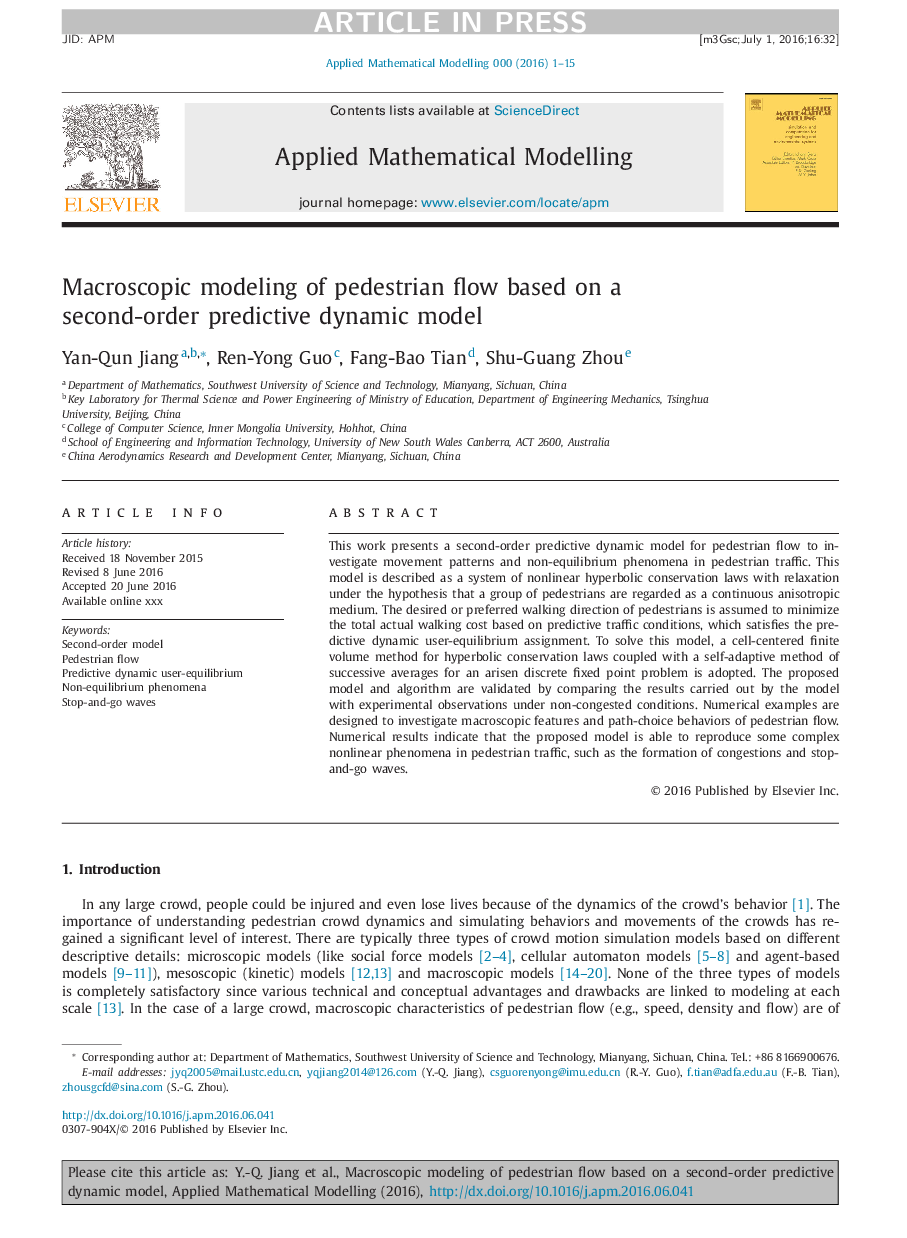| کد مقاله | کد نشریه | سال انتشار | مقاله انگلیسی | نسخه تمام متن |
|---|---|---|---|---|
| 8052234 | 1519393 | 2016 | 15 صفحه PDF | دانلود رایگان |
عنوان انگلیسی مقاله ISI
Macroscopic modeling of pedestrian flow based on a second-order predictive dynamic model
ترجمه فارسی عنوان
مدل سازی ماکروسیوپاتی جریان پیاده روی بر اساس مدل دینامیکی پیش بینی شده دوم مرتبه
دانلود مقاله + سفارش ترجمه
دانلود مقاله ISI انگلیسی
رایگان برای ایرانیان
کلمات کلیدی
مدل دوم مرتبه جریان عابر پیاده، تعادل کاربری پویا پویا، پدیده غیر تعادل، امواج توقف و رفتن،
ترجمه چکیده
این کار مدل پیش بینی پویا دوم را برای جریان عابر پیاده ارائه می دهد تا الگوهای حرکت و پدیده های غیر تعادل در ترافیک عابر پیاده را بررسی کند. این مدل به عنوان یک سیستم از قوانین حفاظت غیر هیجان انگیز هیپربولیک با آرامش به عنوان فرضیه مطرح شده است که یک گروه از عابران پیاده به عنوان یک محیط بی نهایت مداوم در نظر گرفته شده است. مسیر پیشنهادی یا پیشنهادی پیاده روی عابرین پیاده سازی شده است که هزینه کل پیاده روی واقعی را بر اساس شرایط ترافیکی پیش بینی شده به حداقل می رساند، که به تعادل تعادل تعادل کاربر پیش بینی شده ارجحیت دارد. برای حل این مدل، یک روش حجم محدود محور مرکزی برای قوانین حفاظت هیپربولیک همراه با یک روش خود سازگار از میانگین های متوالی برای یک مسئله ثابت نقطه ی گسسته اتخاذ شده است. مدل پیشنهادی و الگوریتم با مقایسه نتایج حاصل از مدل با مشاهدات تجربی در شرایط غیر تراکم، معتبر هستند. نمونه های عددی برای بررسی ویژگی های ماکروسکوپیک و رفتار انتخاب مسیر مسیر عابر پیاده طراحی شده اند. نتایج عددی نشان می دهد که مدل پیشنهادی قادر است برخی از پدیده های پیچیده غیرخطی را در ترافیک عابر پیاده، مانند شکل گیری مخروط ها و امواج متوقف و رها کند.
موضوعات مرتبط
مهندسی و علوم پایه
سایر رشته های مهندسی
مکانیک محاسباتی
چکیده انگلیسی
This work presents a second-order predictive dynamic model for pedestrian flow to investigate movement patterns and non-equilibrium phenomena in pedestrian traffic. This model is described as a system of nonlinear hyperbolic conservation laws with relaxation under the hypothesis that a group of pedestrians are regarded as a continuous anisotropic medium. The desired or preferred walking direction of pedestrians is assumed to minimize the total actual walking cost based on predictive traffic conditions, which satisfies the predictive dynamic user-equilibrium assignment. To solve this model, a cell-centered finite volume method for hyperbolic conservation laws coupled with a self-adaptive method of successive averages for an arisen discrete fixed point problem is adopted. The proposed model and algorithm are validated by comparing the results carried out by the model with experimental observations under non-congested conditions. Numerical examples are designed to investigate macroscopic features and path-choice behaviors of pedestrian flow. Numerical results indicate that the proposed model is able to reproduce some complex nonlinear phenomena in pedestrian traffic, such as the formation of congestions and stop-and-go waves.
ناشر
Database: Elsevier - ScienceDirect (ساینس دایرکت)
Journal: Applied Mathematical Modelling - Volume 40, Issues 23â24, December 2016, Pages 9806-9820
Journal: Applied Mathematical Modelling - Volume 40, Issues 23â24, December 2016, Pages 9806-9820
نویسندگان
Yan-Qun Jiang, Ren-Yong Guo, Fang-Bao Tian, Shu-Guang Zhou,
